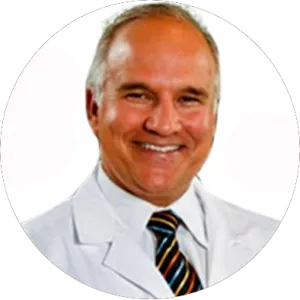How Good Would It Feel To Finally Have a good night sleep"Never Stress About snoring Again!"

Schedule Your Free Consultation Today!

Your journey to restore restorative sleep starts right here
Breathing
We are excited to help guide you through this process.
Breathing problems is the beginning for someone who has not had a study yet or has been diagnosed.
We are excited to help you on your journey to restful restorative sleep. And the process for those who are beginning this journey is to review these discussions, to answer a few simple questions, to guide them, to help them with a better self-awareness as to the quality of their sleep.
Those of you who have been directed or have found us because a loved one partner, a partner has been complaining about your snoring, please fill our Snore Quiz, It will guide us in helping you find an answer to stop snoring. It is a fundamental questionnaires that will help us in t the process.
For those of you who are already diagnosed with sleep apnea, have attempted the same experience or treatment and cannot tolerate it, you are not alone.
CPAP Machine
Many studies show that by the end of three years, 75 percent of people can no longer tolerate CPAP.
So there are many of you out there looking for an answer.
Oral appliance therapy for many of you is the answer.
We have the Expertise
We have an epidemic of sleep problems in our hands, the good news is, we are here to help with many years of experience in Sleep Disorder and Sleep Apnea.
Take a Quick Snore Quiz - It will Help Us Evaluate You
Book Your Free Sleep Apnea Consultation Today!
See The Results Yourself...
- Learn a simple technique you can do tonight, at no cost to you.
- Have a conversation with an expert who has overcome snoring and Sleep Apnea.
- Reach a level of help that provide the immunity to fight Covid.
- Have you discarded your CPAP? -> Find out about the alternative to CPAP.
- Find out about a simple at home Sleep Study.
- Cost is often covered by medical insurance.
Schedule Your Free Consultation Today!
Find the Perfect Program
Free
-
Help Reduce your BMI
-
Sleep on your Side
-
Fitness
-
Nutritional Council
In partnership with




Love, Like, Share, Subscribe:
FAQ - Frequently Asked Questions
Question: What Are the Types of Sleep Apnea?
Answer:
There are four types of sleep apnea:
Obstructive sleep apnea (OSA) : OSA occurs when the airway at the back of the throat becomes physically blocked. That obstruction causes temporary lapses in breath.
Obstructive Sleep Apnea
Obstructive Sleep Apnea in Children
Central Sleep Apnea
- CSA happens because there is a problem with the brain’s system for controlling muscles involved in respiration, leading to slower and shallower breathing.
Central Sleep Apnea
Mixed Sleep Apnea
When a person has both OSA and CSA at the same time, it is referred to as mixed sleep apnea or complex sleep apnea.
Because the underlying causes are distinct, there are important differences in the symptoms, causes, and treatments of OSA and CSA.
Question: How Common is Sleep Apnea?
Answer:
Obstructive sleep apnea is estimated to affect between 2-9% of adults2 in the United States, but many cases are believed to go undiagnosed3 , which fits with studies that have found considerably higher rates of OSA. Precise prevalence is hard to determine because studies have used different criteria for diagnosing the condition. A consistent finding, though, is that OSA affects men more than women4 . It can occur in people of any age but is more common in older adults.
Central sleep apnea has been found to affect around .9% of adults5 over the age of 40. It is found much more frequently in men than in women.
As this data demonstrates, OSA is much more common than CSA. For this reason, when people talk about “sleep apnea,” they are generally referring to OSA.
Question: What Are the Symptoms of Sleep Apnea?
Answer:
All four types of sleep apnea share certain common symptoms:
- Disrupted breathing in which a person’s respiration can become labored or even stop for up to a minute at a time
- Excessive daytime sleepiness
- Morning headaches
- Irritability
- Limited attention span or difficulty thinking clearly
Many of these symptoms arise because of poor sleep and decreased oxygen levels that occur as a result of interrupted breathing.
Some additional symptoms are connected to obstructive sleep apnea:
- Snoring, including snoring that is especially loud and involves gasping, choking, or snorting that may cause a person to briefly wake up
- Morning sore throat or dry mouth
- Frequent need to wake up to urinate6
- is the most common symptom of OSA, but that doesn’t mean that everyone who snores has sleep apnea. Snoring is not a frequent symptom in people with CSA.
In general, a person with sleep apnea is not aware of their breathing problems at night. For that reason, they often only find out about the issue from a bed partner, family member, or roommate. Excessive daytime sleepiness is the most likely symptom to be noticed by people with sleep apnea that live alone.
Question: What Are the Causes of Sleep Apnea?
Answer:
Obstructive sleep apnea occurs when a person’s airway becomes blocked during sleep. Multiple factors have been found to increase the risk of blockage and OSA:
- The size and positioning of a person’s neck, jaw, tongue, tonsils, and other tissue near the back of the throat can directly affect airflow.
- Being overweight is a leading cause of OSA and may be an underlying risk factor in up to 60% of cases. Obesity contributes to anatomical narrowing of the airway, and research has found that a 10% increase in weight can equate to a six-fold increase7 in OSA risk.
Question: What Are the Health Risks of Sleep Apnea?
Answer:
Sleep apnea can lead to sleep deprivation from constant nightly interruptions and shallower overall sleep. Lack of sleep is associated with far-reaching health consequences that affect a person physically, mentally, and emotionally, and as a result, it comes as no surprise that sleep apnea has been tied to diverse health problems.
Because of how it affects oxygen balance in the body, untreated sleep apnea raises dangers for various types of cardiovascular issues12 including high blood pressure, heart attack, heart disease , and stroke.
Question: What Are the Treatments for Sleep Apnea?
Answer:
If you have symptoms of sleep apnea, you should make sure to talk with a doctor. Without understanding the root causes of your sleep apnea, it is difficult to treat. When necessary, the doctor can recommend an overnight sleep study to analyze your sleep, including your breathing.
If a person is diagnosed with OSA or CSA, treatment is often effective at improving sleep and reducing the risks of long-term health complications. A doctor familiar with a patient’s situation is in the best position to address potential benefits and risks of treatments and make specific recommendations.
Lifestyle changes, such as losing weight , reducing use of sedatives, and sleeping on your side, can resolve some cases of OSA. Another common treatment is nightly use of a continuous positive airway pressure (CPAP) or bi-level positive airway pressure (BiPAP) machine. These devices push air through a mask and into the airway to keep it open during sleep.
Some types of mouthpieces that hold the jaw or tongue in a specific position are an option for people with certain anatomical features that trigger mild OSA. In addition, though usually not the first treatment option, surgery to remove tissue and expand the airway can be considered. Medications may be prescribed to help with daytime sleepiness in people with this symptom.
Treatment for CSA typically centers on managing the underlying condition, such as a brain infection, heart failure, or altitude adjustment, that causes disordered breathing. CPAP or BiPAP machines or supplemental oxygen may help some patients as well.
